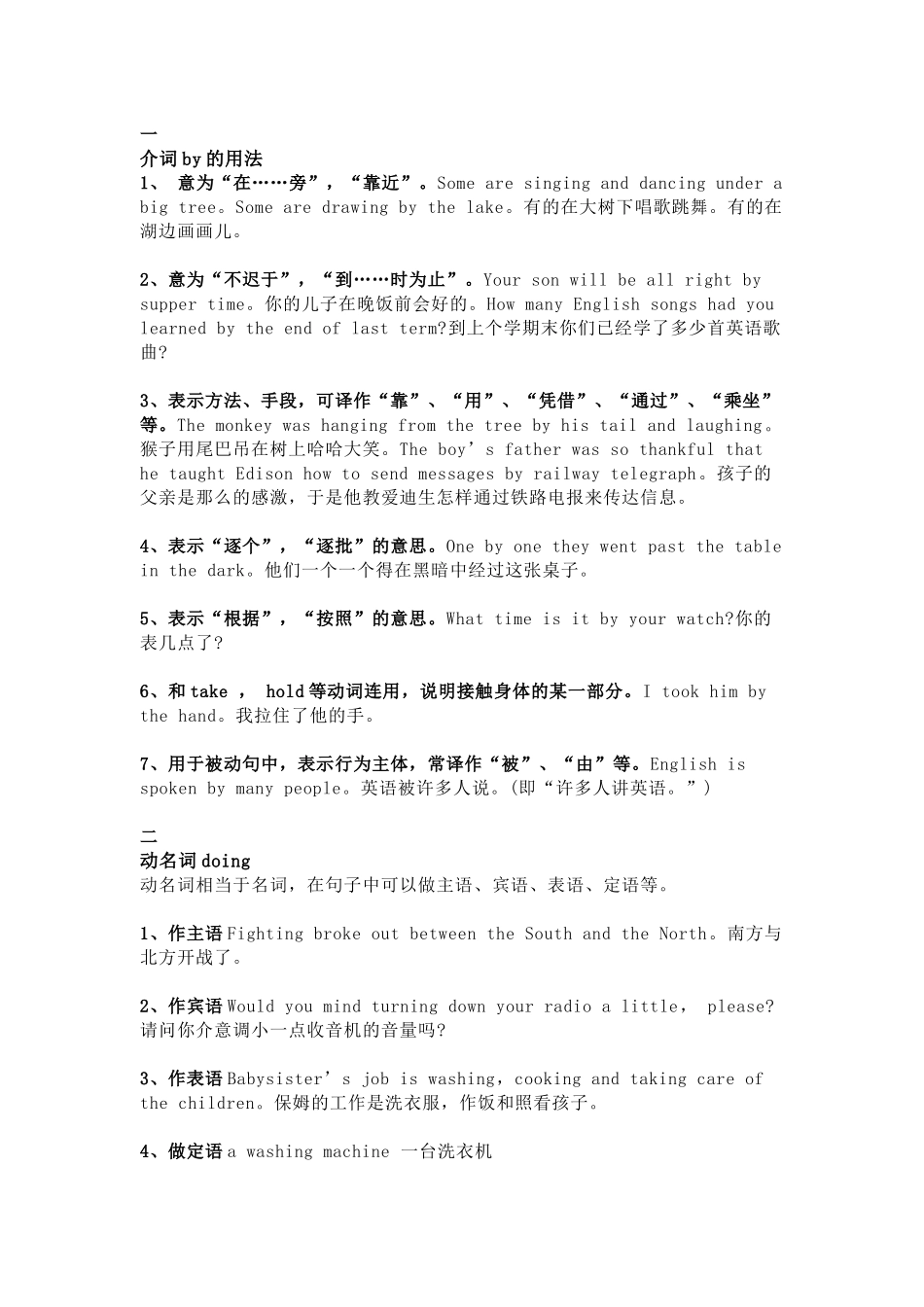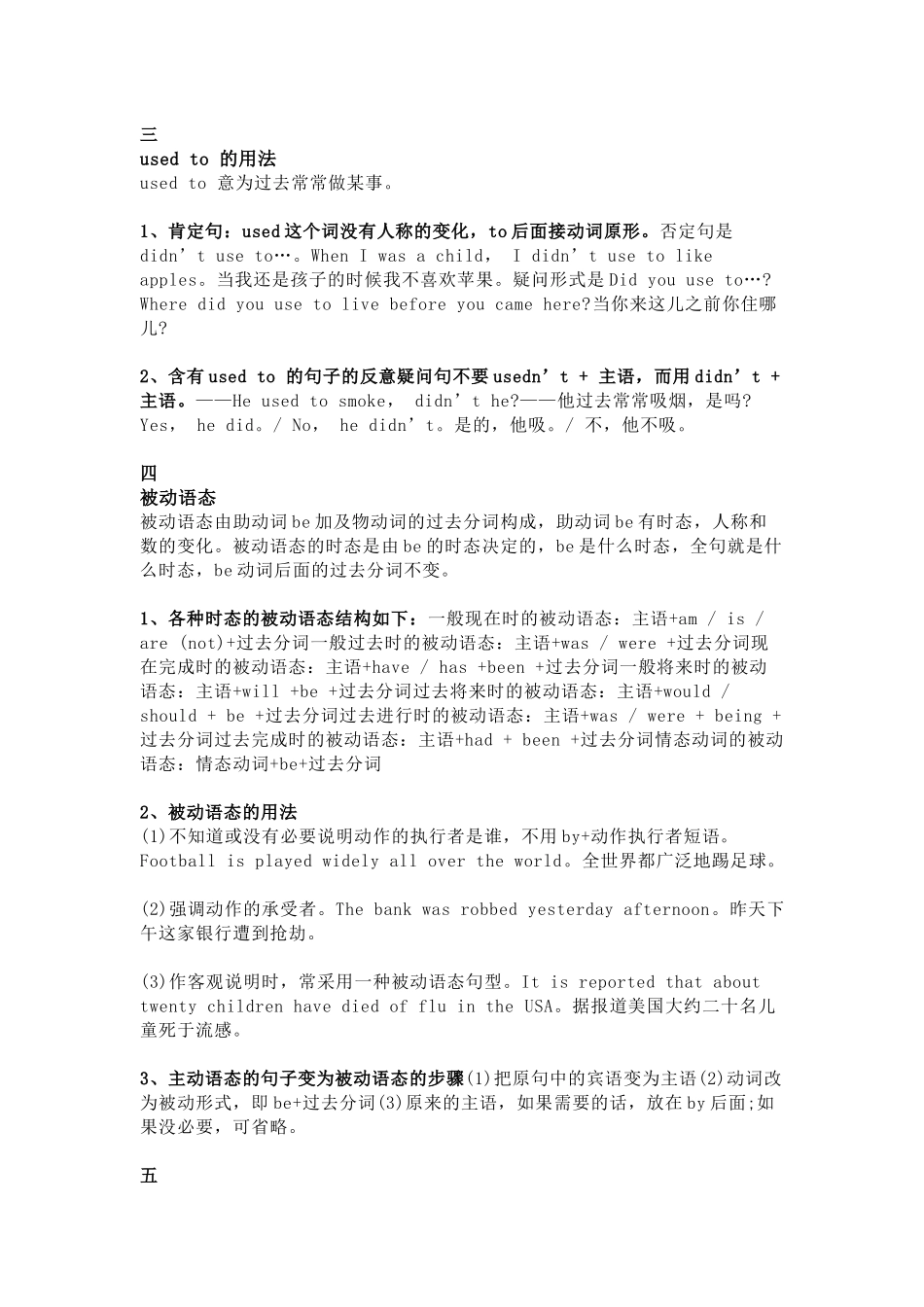一介词 by 的用法1、 意为“在……旁”,“靠近”。Some are singing and dancing under a big tree。Some are drawing by the lake。有的在大树下唱歌跳舞。有的在湖边画画儿。2、意为“不迟于”,“到……时为止”。Your son will be all right by supper time。你的儿子在晚饭前会好的。How many English songs had you learned by the end of last term?到上个学期末你们已经学了多少首英语歌曲?3、表示方法、手段,可译作“靠”、“用”、“凭借”、“通过”、“乘坐”等。The monkey was hanging from the tree by his tail and laughing。猴子用尾巴吊在树上哈哈大笑。The boy’s father was so thankful that he taught Edison how to send messages by railway telegraph。孩子的父亲是那么的感激,于是他教爱迪生怎样通过铁路电报来传达信息。4、表示“逐个”,“逐批”的意思。One by one they went past the table in the dark。他们一个一个得在黑暗中经过这张桌子。5、表示“根据”,“按照”的意思。What time is it by your watch?你的表几点了?6、和 take , hold 等动词连用,说明接触身体的某一部分。I took him by the hand。我拉住了他的手。7、用于被动句中,表示行为主体,常译作“被”、“由”等。English is spoken by many people。英语被许多人说。(即“许多人讲英语。”)二动名词 doing动名词相当于名词,在句子中可以做主语、宾语、表语、定语等。1、作主语 Fighting broke out between the South and the North。南方与北方开战了。2、作宾语 Would you mind turning down your radio a little, please?请问你介意调小一点收音机的音量吗?3、作表语 Babysister’s job is washing,cooking and taking care of the children。保姆的工作是洗衣服,作饭和照看孩子。4、做定语 a washing machine 一台洗衣机三used to 的用法used to 意为过去常常做某事。1、肯定句:used 这个词没有人称的变化,to 后面接动词原形。否定句是didn’t use to…。When I was a child, I didn’t use to like apples。当我还是孩子的时候我不喜欢苹果。疑问形式是 Did you use to…?Where did you use to live before you came here?当你来这儿之前你住哪儿?2、含有...

